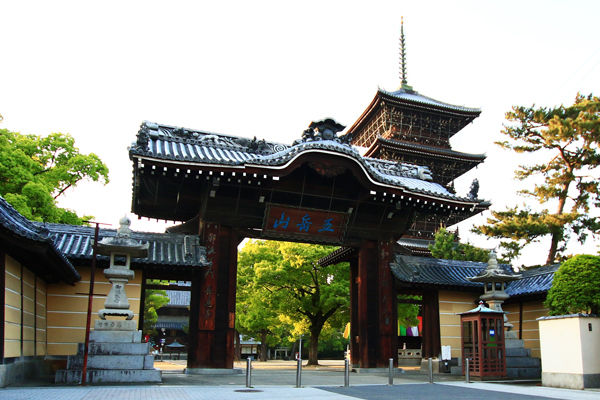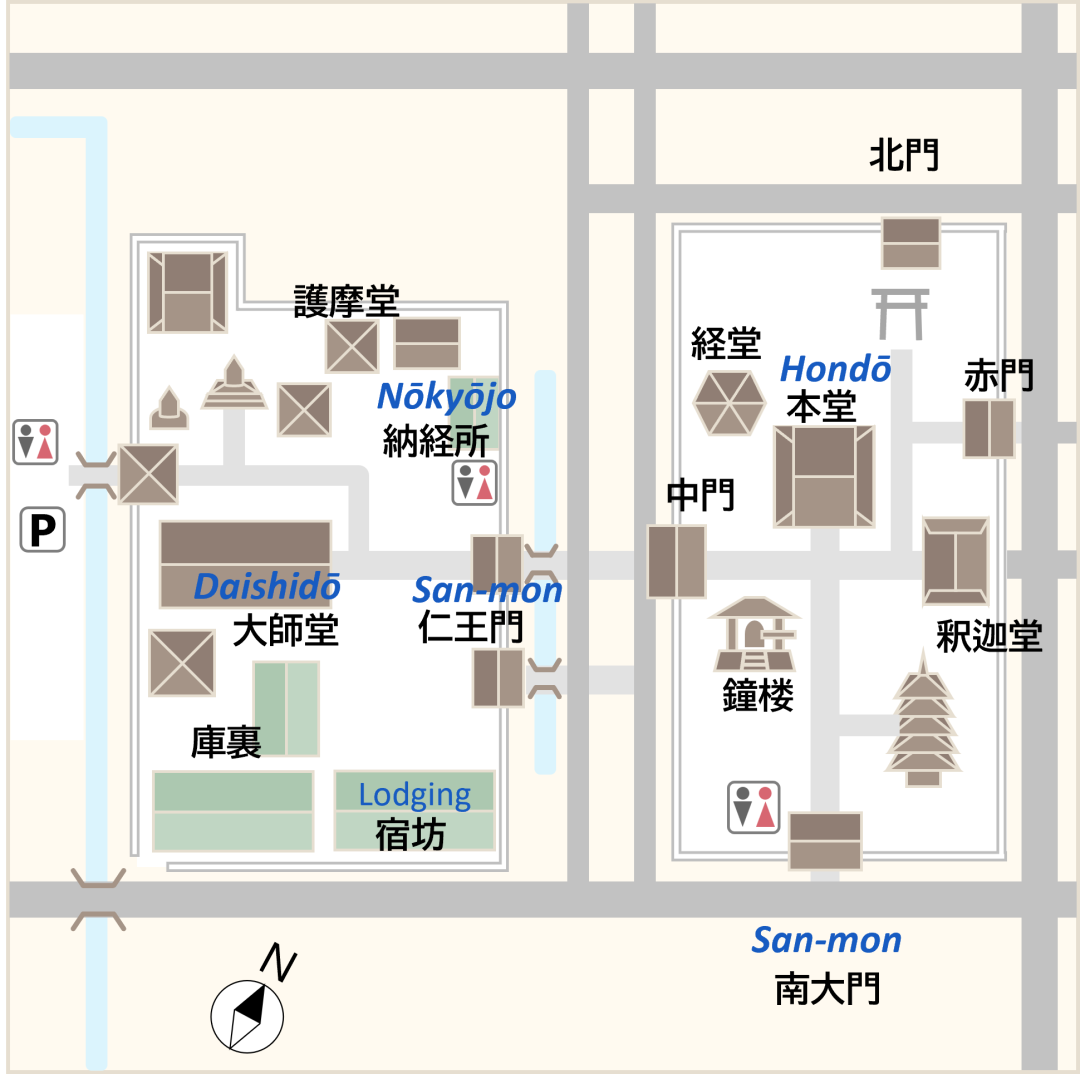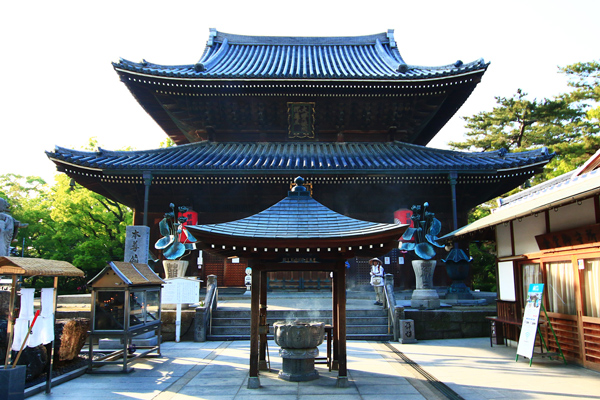The Shikoku Pilgrimage Temple Guide
Templo 75, Zentsūji

Precinct map

History of the temple
According to a text called Tado-gun Byoubu-ura Zentsu-ji no Ki (from the middle of the Edo period (1603-1868), Zentsūji was built by Kobo Daishi, who had returned from Tang Dynasty China. He built Zentsūji on a site donated by his father. It was laid out in imitation of Seiryuji Temple in Changan, where his teacher, the priest Keika, lived. The temple was called Zentsūji after Zentsu, Kobo Daishi’s father.
Sometime during the Kamakura period (1185-1333), the Tanjoin (birth temple) was built on the site of the former Saeki family (his family) residence. Until the Edo period (1603-1868), Zentsūji and Tanjoin were separate temples with separate head priests, but during the Meiji period (1868-1912), they became one temple, called Zentsūji. Today the temple is the head temple of the Zentsuji School of Shingon Buddhism and the 75th temple of the Shikoku Pilgrimage.
The full name of the temple is Byōbuura Gogakuzan Tanjōin Zentsūji. Gogakuzan (Five Peak Mountain). This comes from the five mountains to the west of the temple: Koshikizan, Fudenoyama, Gahaishisan, Nakayama, and Hiageyama. The name, Byōbuura (Folding Screen Bay) comes from the appearance of the mountains which stand in a row like a folding screen. The name, Tanjōin indicates that this is the place where Kobo Daishi was born. Zentsūji, the birthplace of Kobo Daishi, has long been one of the three great spiritual sites of Kobo Daishi, along with Toji Temple in Kyoto and Koyasan in Wakayama.
The vast temple grounds, covering a total area of about 45,000 square meters, are divided into two parts: the East Wing, called the Garan, and the West Wing, called the Tanjōin. The Garan, where the Kondo, the five-storied pagoda, and other buildings stand, has been part of the temple since the temple's foundation. The Tanjōin, with the Mieido at the center, is the site of the Saeki family's former residence, where Kobo Daishi was born. Together, they show Zentsūji’s connections with Kobo Daishi’s birth and family life..
Highlights
Kondo
The original Kondo, another name for the Hondo, was destroyed in 1558 by a fire caused by Miyoshi Jikkyu, an important samurai of the Sengoku period. The present building was completed in 1699. The principal image, a seated Yakushi Nyorai (Medicine Buddha), is a huge statue, three meters tall, and was created in 1700 by Kitagawa Uncho, an Omuro Buddhist sculptor.
Five-storied Pagoda
The five-storied pagoda is 43 meters tall and is widely known as the symbol of Zentsūji. Since its construction, the pagoda has collapsed and burned down several times due to heavy winds and fires, but was rebuilt each time. The present pagoda was rebuilt in 1845 by order of Emperor Ninko, and was completed in 1902. Statues of four of the Gochi Nyorai (Five Wisdom Buddhas) are enshrined on the first floor. The pagoda is open to the public during the holidays at the beginning of May every year.
Mieido
The Mieido is built on the site of the residence of the Saeki family and has the principal image of Mehiki Daishi, made by Kobo Daishi himself. The present building was rebuilt in 1831 and extensively renovated in 1937. There is a 100-meter long Kaidan Meguri in the basement, a tunnel where visitors can unite with Kobo Daishi and remove evil while chanting the Gohogo sutra in the darkness.

Details
Names: Gogakuzan, Tanjōin, Zentsūji
Denomination: Zentsuji School of Shingon Buddhism
Principal Image: Yakushi Nyorai
Founder: Kobo Daishi
Founded: 807
Access
Address:3-3-1 Zentsuji Town, Zentsuji City, Kagawa 765-0003
Phone: 0877-62-0111 (main line)
Parking: Available
Lodging: Available (250-person capacity)
Official website:https://www.zentsuji.com/
facebook:真言宗善通寺派 総本山善通寺
